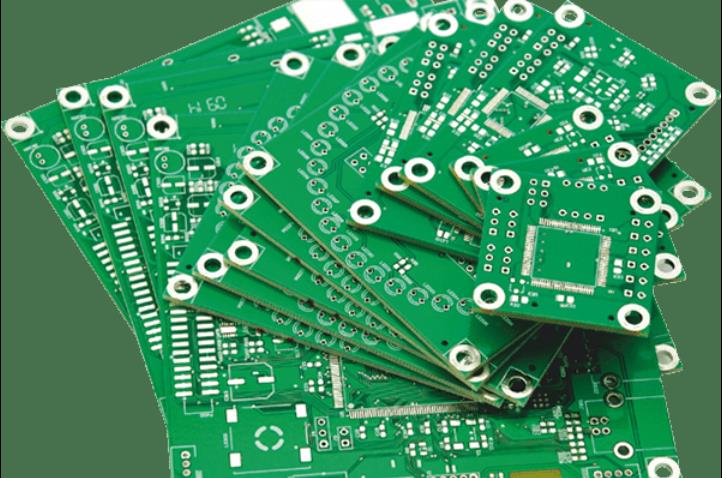The heat dissipation of PCB board is an indispensable link. The untimely heat dissipation of PCB board may lead to the burning of components, excessive and rapid performance consumption, and a significant reduction in the life of PCB board. Therefore, when making PCB, technicians will consider many factors, including heat transfer generated by components. After years of discussion and research, it is finally concluded that the best way to solve the heat dissipation is to improve the heat dissipation capacity of the PCB board that directly contacts the heating components, and transmit or distribute through the PCB board.

PCB board heat dissipation layout
1) The thermal sensor is placed in the cold air area.
2) The temperature detector shall be placed at the hottest position.
3) The components on the same PCB board shall be arranged in zones as far as possible according to their calorific value and heat dissipation degree. The components with low calorific value or poor heat resistance (such as small signal transistors, small-scale integrated circuits, electrolytic capacitors, etc.) shall be placed at the top (entrance) of the cooling air flow, and the components with high calorific value or good heat resistance (such as power transistors, large-scale integrated circuits, etc.) shall be placed at the bottom of the cooling air flow.
4) In the horizontal direction, high-power devices are arranged as close to the edge of the printed board as possible to shorten the heat transfer path; In the vertical direction, high-power devices shall be arranged as close as possible to the top of the printed circuit board, so as to reduce the impact of these devices on the temperature of other devices during operation.
5) The heat dissipation of the printed circuit board in the equipment mainly depends on the air flow, so the air flow path should be studied during the design, and the device or printed circuit board should be reasonably configured. When air flows, it always tends to flow in a place with small resistance. Therefore, when configuring components on the PCB board, it is necessary to avoid leaving a large space in a certain area. The configuration of multiple printed circuit boards in the whole machine should also pay attention to the same problem.
6) The devices that are sensitive to temperature should be placed in the area with the lowest temperature (such as the bottom of the equipment), and should not be placed directly above the heating devices. Multiple devices should be staggered on the horizontal plane.
7) The devices with the highest power consumption and heat generation are arranged near the best heat dissipation position. Do not place the components with high heat generation on the corners and surrounding edges of the printed board, unless there is a heat sink near it. In the design of power resistance, select a larger device as far as possible, and make it have enough heat dissipation space when adjusting the layout of the printed circuit board.
Conformal coating is very necessary for PCB board and PCB board A which must work in harsh environment. The PCB protective coating can protect the circuit board from corrosion, moisture and dust, extend the shelf life of electronic products, and ensure the performance and reliability of electronic products. For harsh environments, conformal coatings should be optimized to better adapt to extreme environments.
1) Protective measures
Conformal coating shielding, electrostatic elimination and film thickness measurement.
2) Conformal coating shield
Now, some parts of the PCB board that do not need conformal coating should be covered, so that unnecessary parts (such as circuit board bracket, potentiometer, switch, power resistor, connector) will not be sprayed with conformal coating to stop abnormal signals. In the process of conformal coating implementation, masking tape is usually used for conformal coating shielding. In order to meet the different shapes of different parts in the shielding, the shielding tape is cut into different shapes and sizes. Due to its shortcomings, the method is prone to cause quality problems, including low efficiency, electrostatic generation and excessive gel residues that are difficult to eliminate.
3) Optimization measures
3M tape should replace traditional tape. The cutting method should be from cutting with tools to using special cutting tools, because the special cutting tools can determine and cut different shapes according to the shape, volume and size of the shield. As long as the protective cover is covered with unnecessary parts, conformal coating will not be applied to it.
4) Conformal coating thickness measurement
The conformal coating is used on the surface of PCB board, which is a thin and light film with a thickness of only a few microns. This film can effectively isolate the circuit board surface from the environment and prevent the circuit from being eroded by chemicals, water and other pollutants. Therefore, the reliability of the circuit board will be greatly improved, the safety factor will be strengthened, and the shelf life will be guaranteed for a long time. However, due to the non-uniformity of the coating, the protective function of conformal coating is still unclear. Therefore, PCB board and final products will fail, especially in harsh environments. How to maintain long-term stability in harsh environments is a very important issue in the manufacture and application of electronic components. Therefore, technicians must take necessary protective measures to ensure the normal operation of electronic products in harsh environments. Therefore, the methods described above are quite important, and are also commonly used to protect PCB board layers.